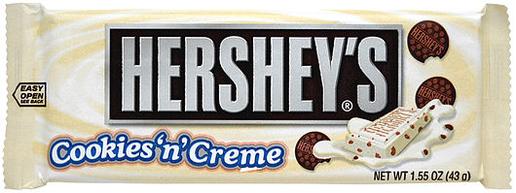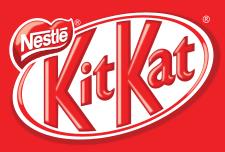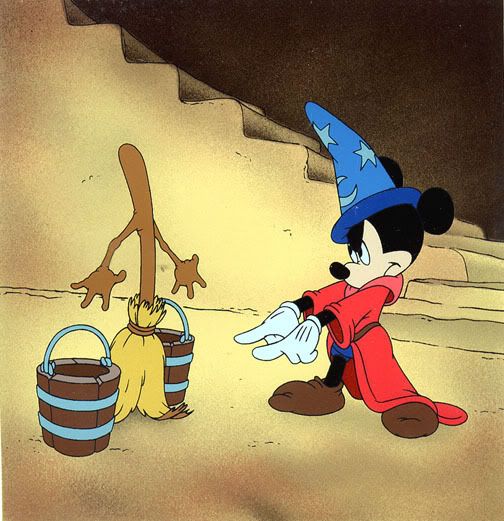What are the greatest candy bars in the world? We polled the listeners of the No Name Show in an effort to find out. The results were stellar . . . and here they are (definitions from Wikipedia.com):

7.
Hershey's Cookies 'n' Creme is a flat, white candy bar containing uniformly-shaped cookie bits similar in taste and texture to an Oreo. It was introduced in 1995.

6.
Abba-Zaba are taffy candy bars with peanut butter centers, made by Annabelle Candy Company in Hayward, CA. According to the Candy Wrapper Museum, the first Abba-Zaba bars were manufactured beginning in 1922 by Colby and McDermott. Before Annabelle Candy Co. started manufacturing Abba-Zaba, the packaging featured imagery which some now consider to be racially biased. Annabelle Candy Co. will only say that the wrapper has been the same for as long as they have manufactured the candy.

5.
Reese's Fast Break is a candy bar similar to the Reese's Peanut Butter Cup. It is coated in milk chocolate, and filled with peanut butter on top of a nougat layer. While the bar initially had a blue and orange wrapper, the color scheme has since been inverted. Later formulations of the Fast Break have a stronger peanut butter taste. This candy bar was originally intended to replace breakfast, hence the name "Fast Break", as in fast breakfast.

4.
Butterfinger is a candy bar made by Nestle. The bar consists of a flaky, orange-colored center -- somewhat similar in texture to crisp caramel, with a tast similar to peanut butter -- that is coated in compound chocolate.
3.
Kit Kat is a chocolate confection which was originally created by Rowntree's of York,

England, and now produced world-wide by Nestle, which acquired Rowntree in 1988, except in the United States where it is made under license by The Hershey Company. Each bar consists of fingers composed of three layers of creme-filled wafer, covered in an outer layer of chocolate. Each finger can be snapped from the bar one at a time.

1. (Tie)
Snickers is a brand name chocolate bar made by Mars, Incorporated. It consists of peanut nougat topped with roasted peanuts and caramel, enrobed in milk chocolate. Snickers has an annual global sales of over $2 billion.

1. (Tie)
Reese's Peanut Butter Cups are a brand of candy filled with peanut butter, marketed by The Hershey Company. They were created in 1928 by Harry Burnett Reese, a former dairy farmer and shipping foreman for Milton S. Hershey. Reese was inspired by Hershey so he left the dairy farm to start his own candy business. The H.B. Reese Candy Co. was established in the basement of Reese's house in Hershey, PA, and used Hershey chocolate in his confections. Reese's Peanut Butter Cups were his most popular candy, and Reese eventually discontinued his other lines. Several years after his death, Reese's company was sold to the Hershey Company in 1963 for $23.5 million. The H.B. Reese Company is maintained as a subsidiary of Hershey because the Reese plant work force is not unionized, unlike the main Hershey plant.
 About a month ago I found a spot on the Topos in the Deer Creek drainage that looked like a potential waterfall. The satelite imagery was inconclusive but it looked good enough for me to check out. After driving through a maze of logging roads, I located the creek. It was pretty good sized but it was rainy that day so I elected to save it for a better day.
About a month ago I found a spot on the Topos in the Deer Creek drainage that looked like a potential waterfall. The satelite imagery was inconclusive but it looked good enough for me to check out. After driving through a maze of logging roads, I located the creek. It was pretty good sized but it was rainy that day so I elected to save it for a better day.















